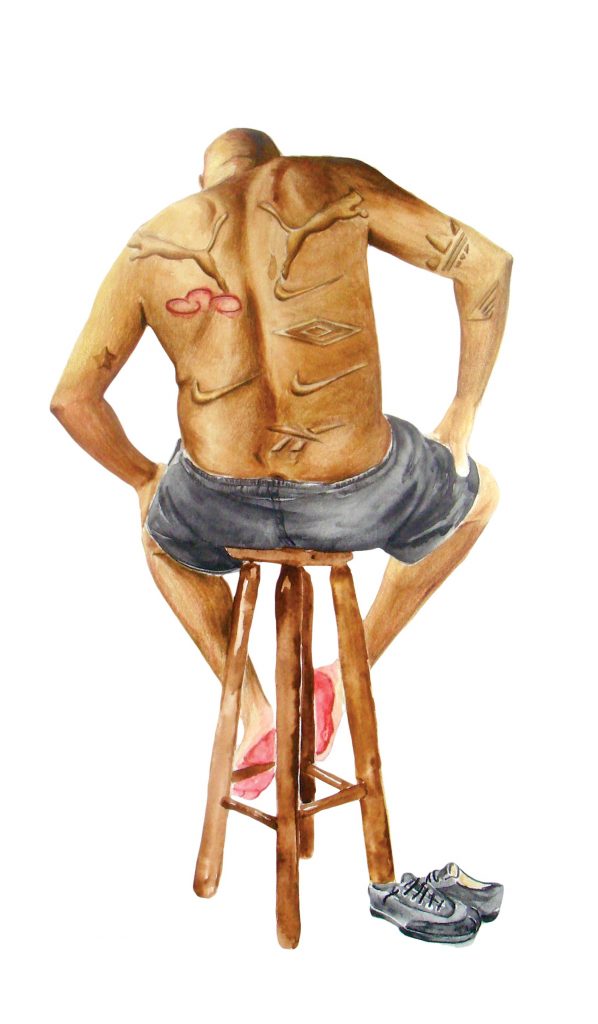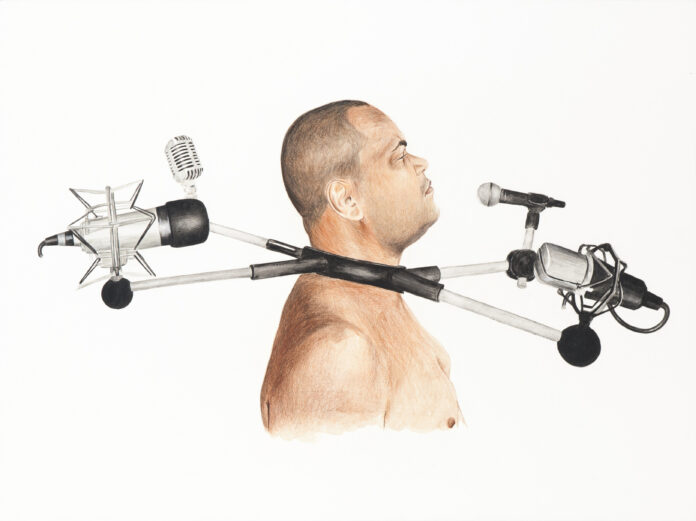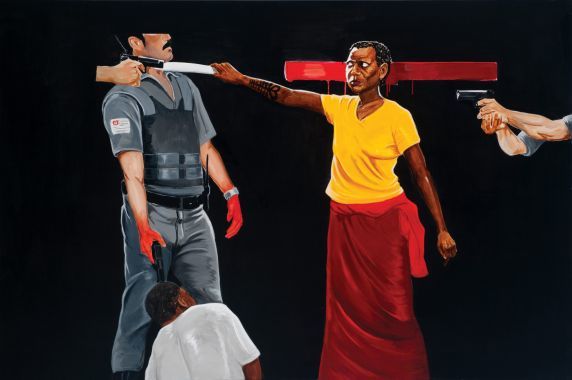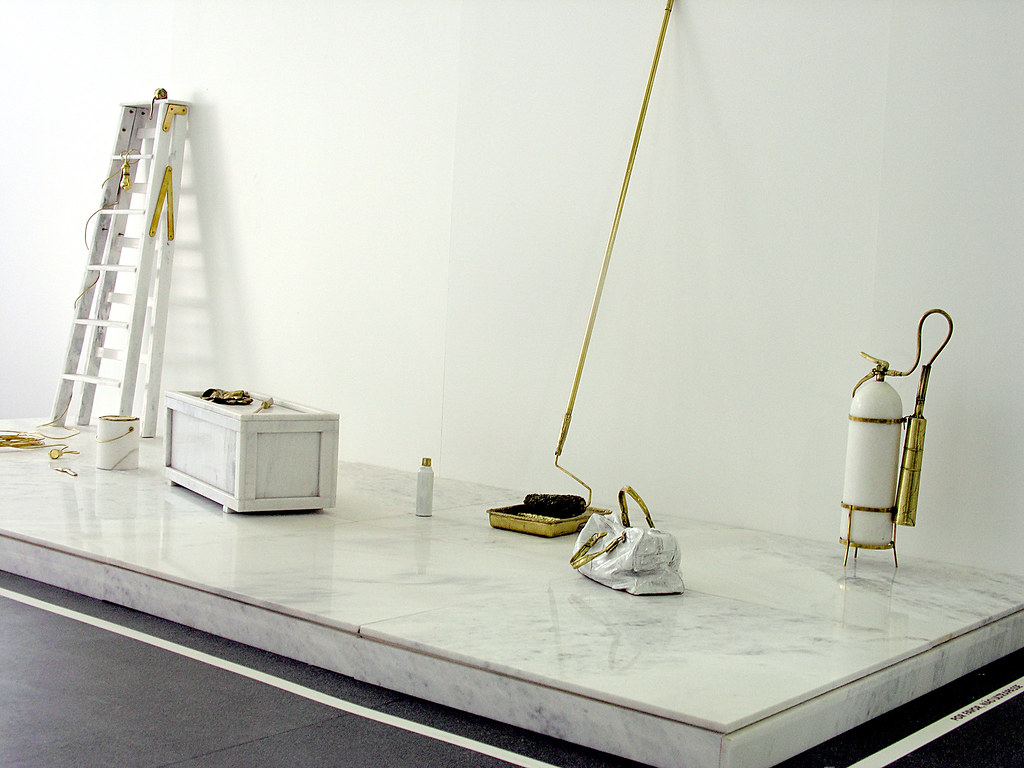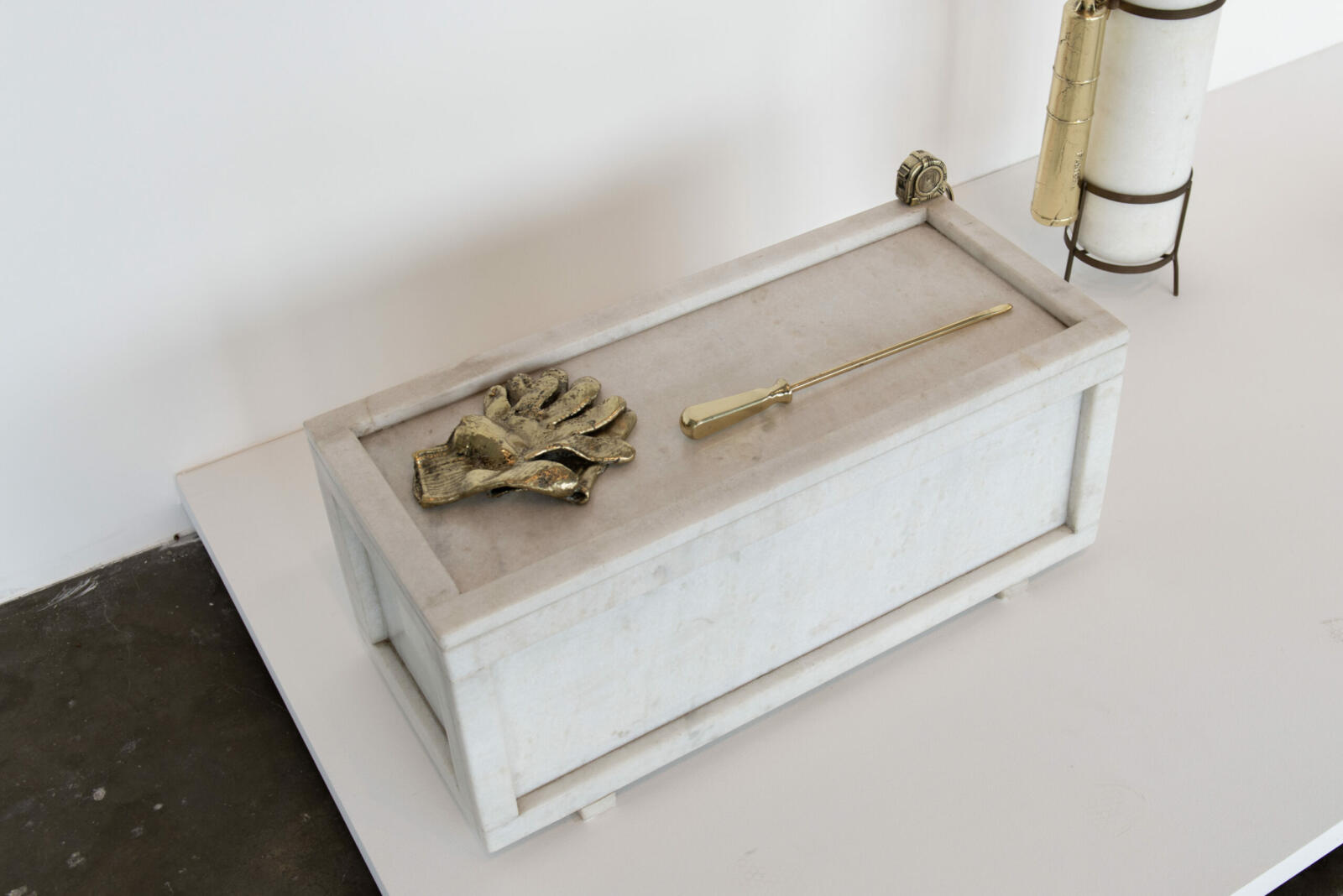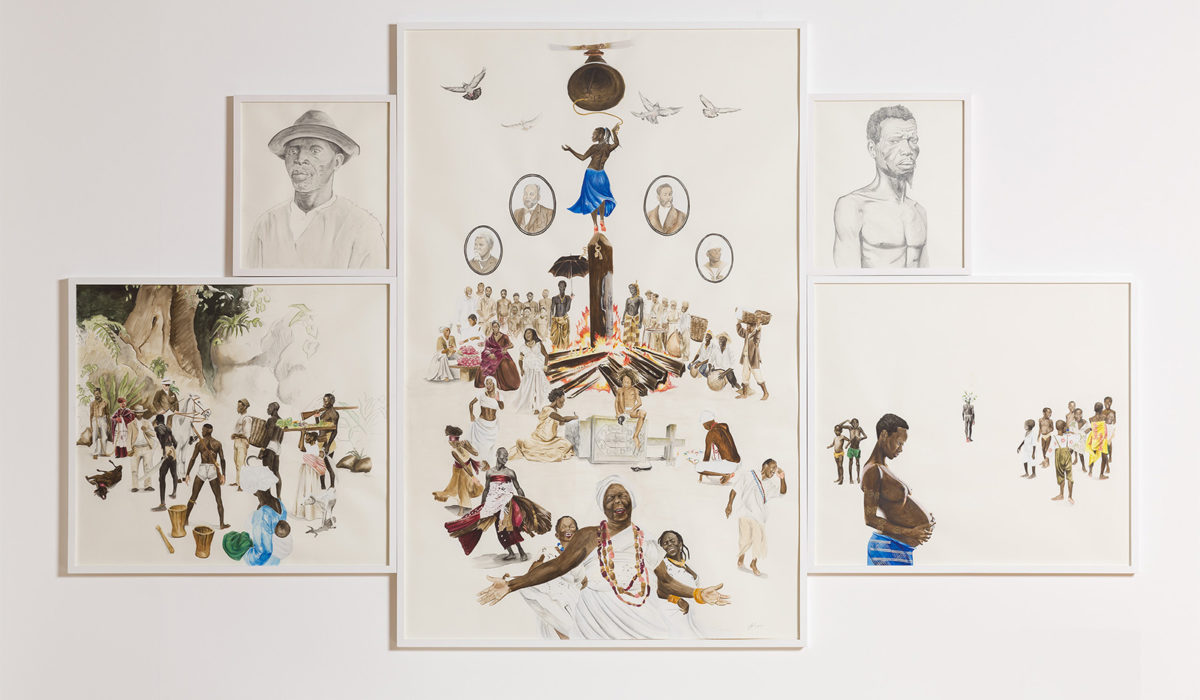Transfigured art, everyday objects elevated, and uncompromising social critique — that’s the art of Sidney Amaral.
Conversation is the best entertainment.
As long as you name-drop the right elements.
The hard-hitting, uppercut-style art of Afro-Brazilian
artist Sidney Amaral, for instance.
Hailing from São Paulo, he used his practice to confront head-on the legacies of colonialism, slavery, and racial inequalities,
all while offering poignant reflections on identity and oppression.
Sidney Amaral didn’t deal in subtlety.
His art is brutal, direct, forcing one to stare History in the face.
And that’s exactly why we LOVE it!
1. Art and the Legacy of Black People in Brazil
Sidney Amaral (1973 – 2017) did more than create art. He spoke of history.
He unveiled the suppressed, forgotten, and neglected stories of Afro-Brazilians.
In a Brazil still scarred by the legacy of slavery, where Black people were often depicted within a folkloric or subordinate framework,
Sidney Amaral offered a fresh perspective.
He portrayed Black people as individuals full of agency – aka own willingness – who challenged oppression.
Statement N°1: “My work strove to reposition Brazilian Black communities on a different level, far from the simple folkloric or slave image to which they are often reduced in history."
Sidney Amaral2. Art work: “Accesso Restrito” – Tools of Labor in Gold. A Work of Reappropriation
When we think of the legacy of slavery in Brazil, we think of the menial jobs passed down to their descendants: cleaning, painting, repairing, carrying. These jobs, deemed “hard” and invisible.
But Sidney Amaral got a brilliant idea!
He took these tools and dipped them in gold, both literally and symbolically.
Gold, the very same metal plundered from the lands of colonized peoples, which he imbued with meaning, became a symbol of revolt.
Sidney Amaral transformed objects like vacuum cleaners, brooms, and shovels — tools of survival and daily labor — into powerful artifacts, magnifying their hidden history of suffering and repression.
Statement N°2: “Every object has a story, and often these stories are marked by suffering and repression. My work is to give them a voice, to reveal what they hide.”
It isn’t just art; it’s a visual rebellion against the dominant narrative.
Statement N°3: “When I work with these objects, I don’t just transform them. I restore their dignity.”
3. Art and the Legacy of Black People in Brazil
Take, for example, this first work (left image) – “Black Mother or Iansan’s Fury”, 2014.
A Black woman holds a blade to the throat of a uniformed officer.
Here, there is no calm discussion of reconciliation: it is a direct, raw confrontation, where resistance takes a form as brutal as it is symbolic.
Sidney Amaral stages what is left unsaid, a historical revenge in images, where the roles are reversed.
Power no longer rests in the hands of the oppressors, but in those they thought they had silenced forever.
In this way, Sidney Amaral reminds us that history could very well be rewritten differently.
There’s this almost absurd scene – “The sheep and me”, 2014.
A Black man, holding a cleaning product, faces a white sheep. The confrontation is silent, but it speaks volumes.
What is this man doing? Is he cleaning the sheep? Dominating it? Or is it a reflection of his own alienation?
Here, Amaral questions the modern relationship of servitude, the one in which we think we are masters, but are merely prisoners of an absurd system.
The bitter laughter arises from this improbable face-off, where the human and the animal both seem equally lost.
In another work – “Gargaleira, or Who Will Speak for Us” – Amaral delves into the issue of speech, or rather surveillance, with a man whose neck is bound by microphones. Is this an ode to freedom of expression? Not quite.
These microphones are more a reminder that, in our world saturated with communication, the voices of the oppressed are always caught in a network of control.
The more they are given a voice, the more they are framed, monitored, and limited.
The irony of the scene is that this man is both invited to speak and simultaneously crucified by technology.
The voice becomes a tool of domination.
Finally, Amaral offers a biting critique of consumerism with this image of a man with a bare back, marked by the logos of major brands – “The Athlete or the Dream of Kichute”, 2013.
Every scar, every logo, is an indelible mark left by capitalism on the human body.
These forced tattoos reveal how deeply we are all, to varying degrees, branded, possessed by modern consumerism.
The man seems tired, seated, almost resigned, as if bearing the burden of these brands with which he must live.
Once again, Sidney Amaral didn’t just painted; he put his finger where it hurts, where social critique becomes an open wound.
Thumbs up!!
4. Art as Provocation and Revolt
Sidney Amaral turned his art into a weapon. A weapon against invisibility. A weapon against silence.
His art was a revolt against the history as it has been told – a radical reappropriation of the past and a provocation toward the present.
With his works, Amaral was not aiming to please.
He aimed to disturb, to shake up our view of the world.
Statement N°4: “If you don’t see the pain in these objects, then you see nothing at all.”
Sidney Amaral, the artist who reminds us that gold is not only a symbol of wealth but also of theft and suffering…
Art, Repression, and Rewiring the History Connections Baby!
